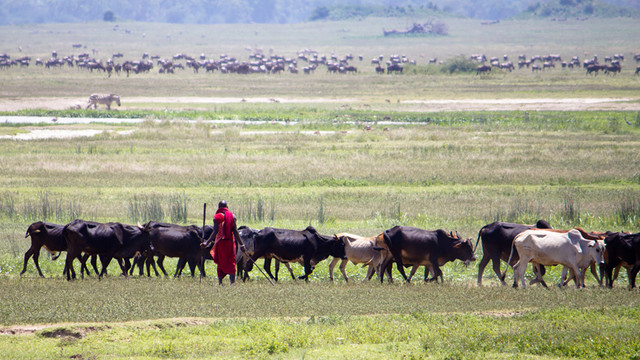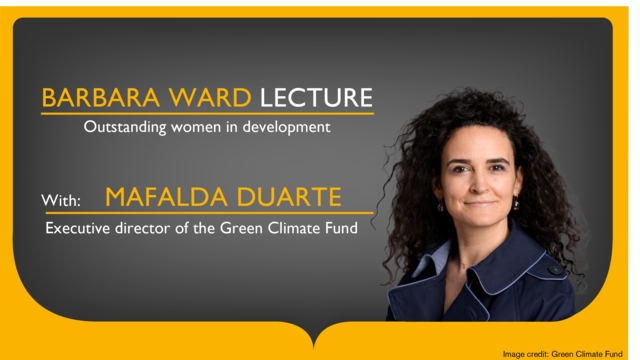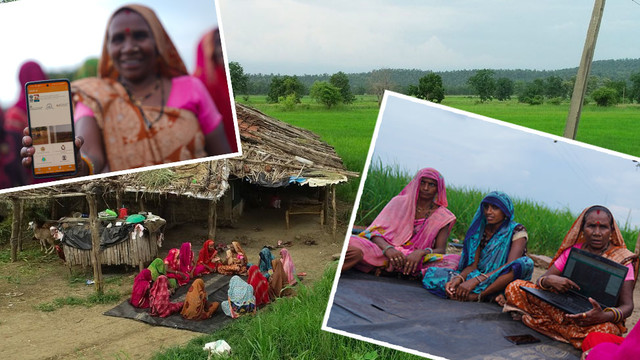Climate finance from the aid budget must also deliver on poverty
The UK has promised to increase funding for climate finance up to 2020, but if this money comes from the aid budget, how can we be sure that climate spending will also deliver on poverty eradication and the sustainable development agenda?


Mozambique: bringing the cattle in from the fields. Mozambique is vulnerable to climate change because of its geography, but also has a poorly developed economy, frail infrastructure, and high levels of poverty (Photo: ILRI/Stevie Mann, Creative Commons via Flickr)
The UK's increased promise of £5.8 billion in climate finance between 2016 and 2021 is welcome ahead of the Paris climate talks in December (COP21). But while finance to tackle climate change mitigation and adaptation is desperately needed, the announcement that this money will come from Official Development Assistance (ODA) raises significant issues.
Not least is the question of whether the UK government can guarantee that this ODA money allocated to climate change responses will also help meet the commitments it made in New York to eliminate extreme poverty and implement the Sustainable Development Goals (SDGs). Because the UK's official development assistance (ODA) budget is fixed at a laudable 0.7 per cent of gross national income (GNI), money directed towards climate finance by inference reduces the amount available for other aid commitments.
The prime minister was clear in his speech to the United Nations summit in New York that tackling climate change and poverty must go together, protecting natural resources for future generations.
Can climate finance deliver development?
There is no doubt that climate finance can help deliver development goals (and climate action is a key part of the new sustainable development agenda). Indeed it is not always possible or necessary to distinguish between the two.
IIED has previously raised the question of whether and if so how a distinction should be made between finance for climate-related projects that deliver poverty reduction (investment in climate resilient agriculture in Bangladesh, for example) and finance that is used purely to mitigate climate emissions.
IIED's chief economist Paul Steele argues that a distinction needs to be made between both adaptation and mitigation climate finance, and between climate finance targeted at the Least Developed Countries (LDCs) and finance targeted at Middle Income Countries (MICs).
Should investments such as in geo-thermal energy generation in Kenya, important from a climate perspective, be financed from the UK's aid budgets?
Meeting the needs of LDCs
There is of course an urgent need to source finance for climate adaptation work in the Least Developed Countries (LDCs). The Least Developed Country Fund is currently empty while projects identified as urgent and immediate wait for finance. In many cases these projects will deliver on all fronts – supporting climate adaptation and poverty eradication.
Article 4.3 of the UN Framework Conventional on Climate Change (PDF) defines climate finance 'commitments'. It says: "The developed country Parties and other developed Parties included in Annex II shall provide new and additional financial resources to meet the agreed full costs incurred by developing country Parties in complying with their obligations under Article 12, paragraph 1."
Further this includes "… financial resources to meet the agreed full incremental costs of implementing measures… The implementation of these commitments shall take into account the need for adequacy and predictability in the flow of funds and the importance of appropriate burden sharing among the developed country Parties."
So, while aid is based on the notion of solidarity between countries, climate finance should be based on the principle of common but differentiated responsibility – with industrialised countries bearing the brunt of the costs, having industrialised first and being responsible for the bulk of historical climate emissions.
Making a trade off
If climate finance continues to be sourced from aid budgets in the UK, and in other OECD countries, then it is clear that in some cases, and at some point, there will have to be a trade-off. Climate adaptation will draw resources from poverty eradication, health improvement, or efforts to deliver clean water.
The numbers already suggest that this has been happening, with the overall share of ODA to LDCs declining in 2012. Internationally, bilateral climate finance was USD $23 billion in 2013 or 17 per cent of total bilateral aid, with 60 per cent of this $23 billion going on mitigation, primarily in middle-income countries (PDF).
So climate adaptation has to pull its weight in development terms and not only climate proof development, but be invested in ways that make the whole greater than the sum of the parts.
Crucial UK funding
The UK's commitment to maintaining official aid spending at 0.7 per cent of GNI is very important, and other countries should follow this lead. The UK government's commitment to effective aid expenditure is also crucial.
And we welcome the 50:50 split between investments in developing countries on climate adaptation and climate mitigation, especially as we need to look at investments that render both reductions in greenhouse gas emissions and increases in adaptive capacity.
But there is an argument to be made that aid money should not be spent in support of climate mitigation in middle income countries. ODA should be spent on meeting wider poverty goals. Private sector and non-ODA resources should support mitigation in MICs.
The UK government will still have incentives to spend on mitigation to promote renewable technology exports, and to meet their own climate emission reduction targets through cheaper investments abroad.
And they can still get credit for the spending through the OECD's recent move to measure total official support for sustainable development.
Simon Anderson (simon.anderson@iied.org) is head of IIED's Climate Change Group.


